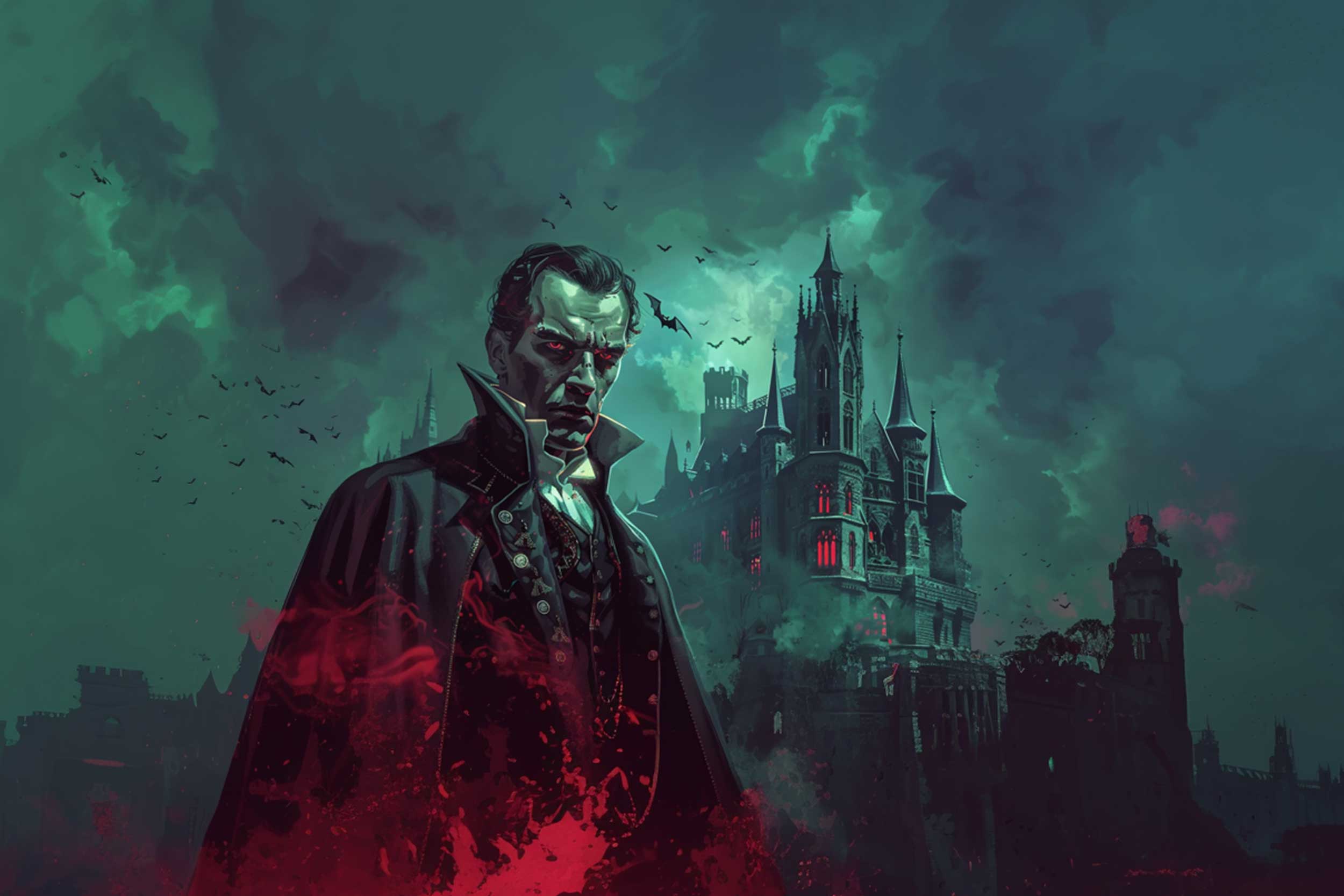Table of Contents
In Dracula by Bram Stoker, we follow Jonathan Harker, a newly qualified English solicitor, who visits Count Dracula’s castle in the Carpathian Mountains to assist with a real estate transaction. Unbeknownst to him, this journey marks the beginning of a horrifying adventure. Harker meets three vampire women and barely escapes with the help of Dracula, later Dracula leaves him with the same women. He eventually escapes the castle, ending up delirious in a Budapest hospital. Meanwhile, Dracula makes his way to England aboard the Demeter, a journey marked by mysterious disappearances and death, culminating in the ship running aground at Whitby.
Simultaneously, Lucy Westenra, a close friend of Harker’s fiancée Mina Murray, receives marriage proposals from three men. She accepts Arthur Holmwood’s proposal but remains friends with Dr. John Seward and Quincey Morris. Soon, Dracula stalks Lucy, leading to her mysterious illness. Mina rushes to Budapest to nurse Harker, now her fiancé, back to health. Lucy’s condition worsens, prompting Dr. Seward to enlist the help of Professor Abraham Van Helsing. Despite Van Helsing’s efforts, Lucy succumbs to Dracula’s influence, transforming into a vampire. Van Helsing and his allies ultimately confront the vampiric Lucy, ending her undead existence.
Returning to England, Jonathan and Mina Harker join forces with Van Helsing, Seward, Holmwood, and Morris to hunt Dracula. Their battle against Count Dracula involves deciphering his moves and sanctifying the earth-filled boxes he uses for rest. After a series of dramatic confrontations, they track Dracula back to his castle in Transylvania. In a final showdown, Harker and Morris destroy Dracula, freeing Mina from her curse. Unfortunately, Morris dies in the process. A note from Harker seven years later reveals that he and Mina have named their son Quincey in honor of their fallen friend.
What I Liked About the Dracula by Bram Stoker
Atmospheric Setting
One of the most striking aspects of Dracula by Bram Stoker is its atmospheric setting. The author’s descriptive imagery brings to life the eerie landscapes of Transylvania and the haunting environs of Whitby. The Gothic elements, from the foreboding castle to the dark, misty nights, create an immersive horror book experience that pulls you into the story’s embrace.
Complex Characters
Stoker’s characters are richly developed and memorable. Jonathan Harker’s transformation from a naive solicitor to a determined vampire hunter is compelling. Mina Harker stands out as a strong, intelligent female character, crucial to the plot and the group’s success. Professor Van Helsing, with his deep knowledge and unwavering courage, serves as the anchor of the vampire-hunting group. These characters, each with their unique strengths and vulnerabilities, enhance the story’s depth and emotional impact.
Innovative Narrative Structure
The novel’s epistolary format, composed of letters, diary entries, and newspaper clippings, provides multiple perspectives, building tension and suspense throughout the narrative. This fragmented storytelling technique keeps readers engaged and adds a layer of authenticity to the supernatural events unfolding within the story.
What I Disliked About the Dracula by Bram Stoker
Pacing Issues
While Dracula is a captivating story, it suffers from pacing issues. The beginning chapters, which focus heavily on Harker’s mundane activities in Dracula’s castle, can feel slow and drawn out. Additionally, certain parts of the book drag, while others, especially the final chase, feel rushed. This uneven pacing can detract from the overall reading experience.
Dated Elements
Some aspects of the book reflect the time it was written and may feel outdated to modern readers. The portrayal of gender roles, particularly the Victorian views on female sexuality, can seem restrictive and stereotypical. Furthermore, the depiction of Eastern Europeans and Romani people can come across as offensive and culturally insensitive.
Themes and Literary Devices of Dracula by Bram Stoker
Fear and the Unknown
Dracula delves into the Victorian fear of the foreign and the unknown. Count Dracula, with his mysterious origins and supernatural powers, embodies these anxieties.
Sexuality
The novel also explores themes of sexuality, particularly repressed desires. Dracula’s bite is often interpreted as a metaphor for these hidden longings, challenging the societal norms of the time. The transformation of Lucy and Mina highlights Victorian anxieties about female sexuality, adding another layer of horror to the story.
Symbolism
Stoker employs various symbols throughout the novel. Blood is a recurring symbol, representing life, death, and the transmission of vampirism. Garlic and crucifixes symbolize purity and protection against evil, integral to the vampire hunters’ arsenal.
Metaphor
Dracula himself serves as a metaphor for numerous fears of the Victorian era, including disease, invasion, and societal degeneration. This metaphorical depth adds richness to the narrative and invites readers to ponder the broader implications of the story.
Conclusion
In summary, Dracula by Bram Stoker is a seminal horror book that excels in creating a rich, atmospheric setting and developing complex characters. Its innovative narrative structure keeps readers engaged, despite occasional pacing issues. The book’s exploration of fear, sexuality, and societal anxieties remains relevant and thought-provoking.






